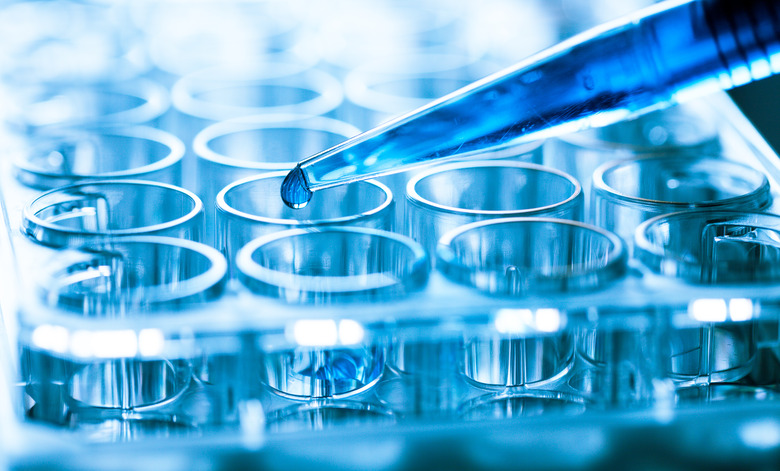What Will Happen To The pH Of Water If HCI Is Added?
Acids are deeply involved in countless biological, geological and technological processes. Bacteria produce lactic acid that preserves food, soil acids release nutrients from rock-based fertilizers and acids in batteries lead to reactions that generate electrical energy. Hydrochloric acid, often abbreviated as HCl, is a common example of a strong acid, and specific pH values can be achieved through mixtures of hydrochloric acid and water.
TL;DR (Too Long; Didn't Read)
The addition of hydrocloric acid to water lowers the pH of water to a value less than 7.0 and makes an acidic solution.
Measuring Acidity
Measuring Acidity
The pH scale, which typically ranges from 0 to 14, measures the concentration of hydrogen ions in a substance. Acids have pH values less than 7, bases have pH values greater than 7 and a pH value of 7.0 is the neutral point. The pH scale is negative and logarithmic, which means that a factor-of-ten increase in hydrogen ion concentration corresponds to a decrease of one unit on the pH scale. Adding an acidic substance to water decreases the overall pH of the solution.
Broken Molecules, Free Ions
Broken Molecules, Free Ions
When an acid is added to water, the molecules of the acid separate into individual ions in a process known as disassociation. A molecule of hydrochloric acid, for example, is composed of a hydrogen atom and a chlorine atom. When these molecules dissolve into water, they separate into a positively charged hydrogen ion and a negatively charged chlorine ion. This leads to an increased concentration of hydrogen ions and thus to a lower pH. Hydrochloric acid is classified as a "strong" acid, which means that virtually all of the molecules disassociate. Many other acids — such as acetic acid, commonly referred to as vinegar — are classified as "weak" acids. Only some of the molecules of weak acids disassociate when added to water.
An Extreme Acid
An Extreme Acid
Pure hydrochloric acid has a theoretical pH of zero — in other words, it is extremely acidic. In practical situations, however, hydrochloric acid exists only as a diluted substance. Consequently, the effective pH of hydrochloric acid depends upon the degree of dilution. Because the pH of hydrochloric acid is so low, large pH changes occur even when tiny amounts are added to a neutral solution such as water. One example of diluted hydrochloric acid is human stomach acid, which has a pH value around 3.
Predicting pH
Predicting pH
The degree of pH change that occurs when strong acids such as hydrochloric acid are added to water corresponds directly to the dilution factor, because all of the acidic molecules release one hydrogen ion. Because the pH scale follows a logarithmic relationship, a factor-of-ten dilution corresponds to a pH change of one unit. For example, 1 milliliter of hydrochloric acid added to 10 milliliters of pH-neutral water results in a decrease in the concentration of hydrogen ions by one factor of ten. Thus, the pH of the final solution will be one unit higher than the pH of the original hydrochloric acid. If 1 milliliter of hydrochloric acid is added to 100 milliliters of water, the concentration of hydrogen ions decreases by two factors of ten and the pH increases by two units.
Cite This Article
MLA
West, Joseph. "What Will Happen To The pH Of Water If HCI Is Added?" sciencing.com, https://www.sciencing.com/happen-ph-water-hci-added-9037/. 22 May 2018.
APA
West, Joseph. (2018, May 22). What Will Happen To The pH Of Water If HCI Is Added?. sciencing.com. Retrieved from https://www.sciencing.com/happen-ph-water-hci-added-9037/
Chicago
West, Joseph. What Will Happen To The pH Of Water If HCI Is Added? last modified March 24, 2022. https://www.sciencing.com/happen-ph-water-hci-added-9037/
